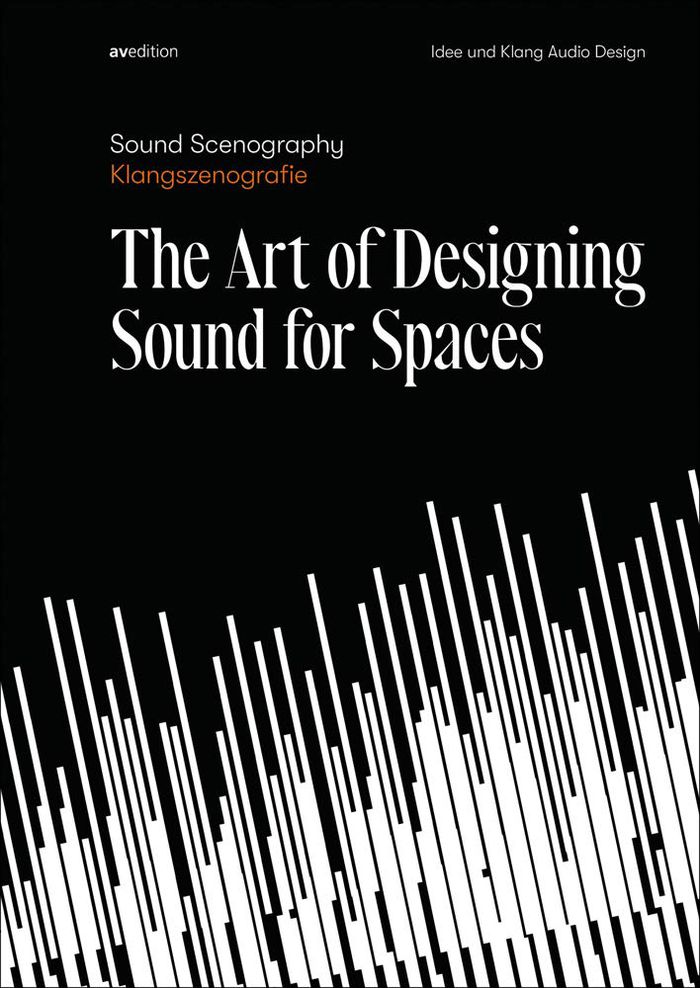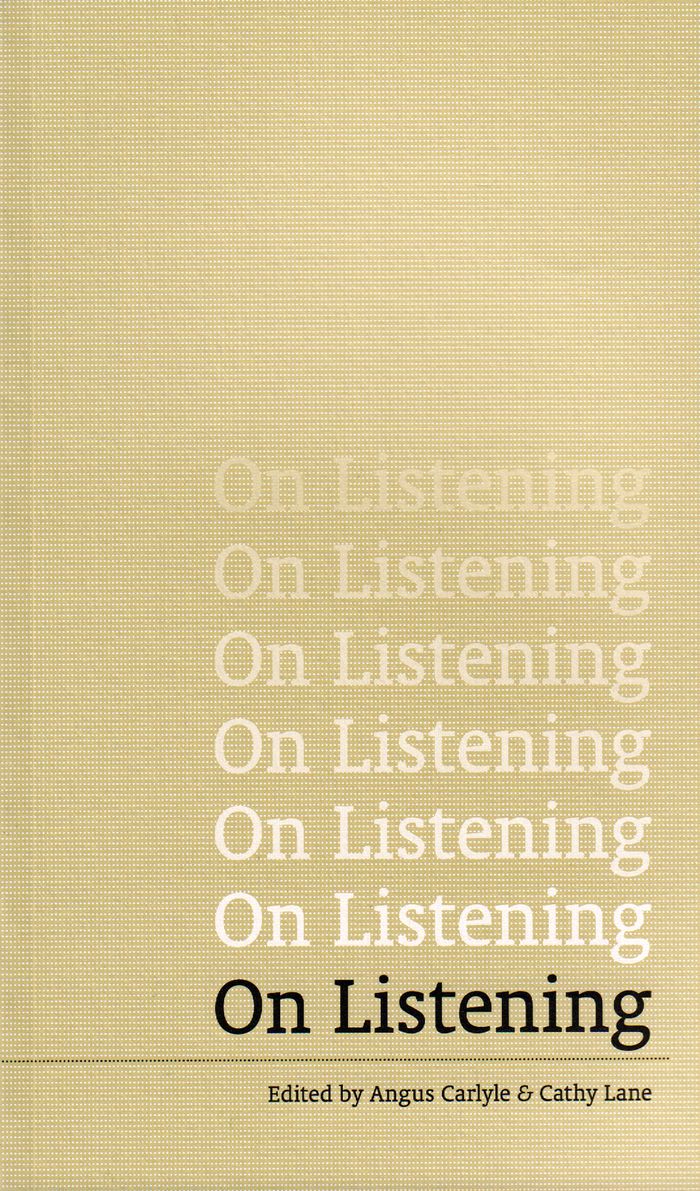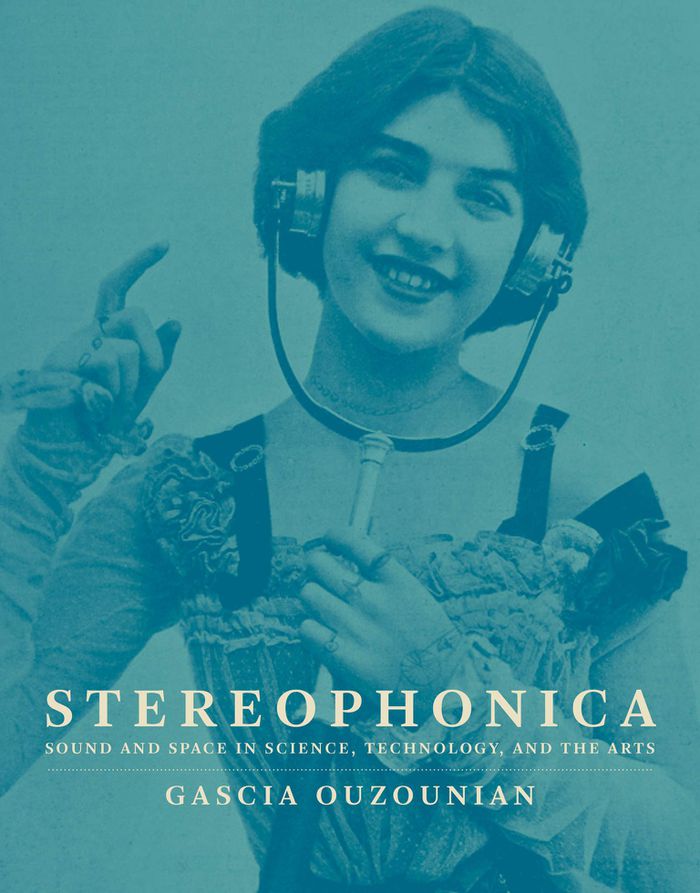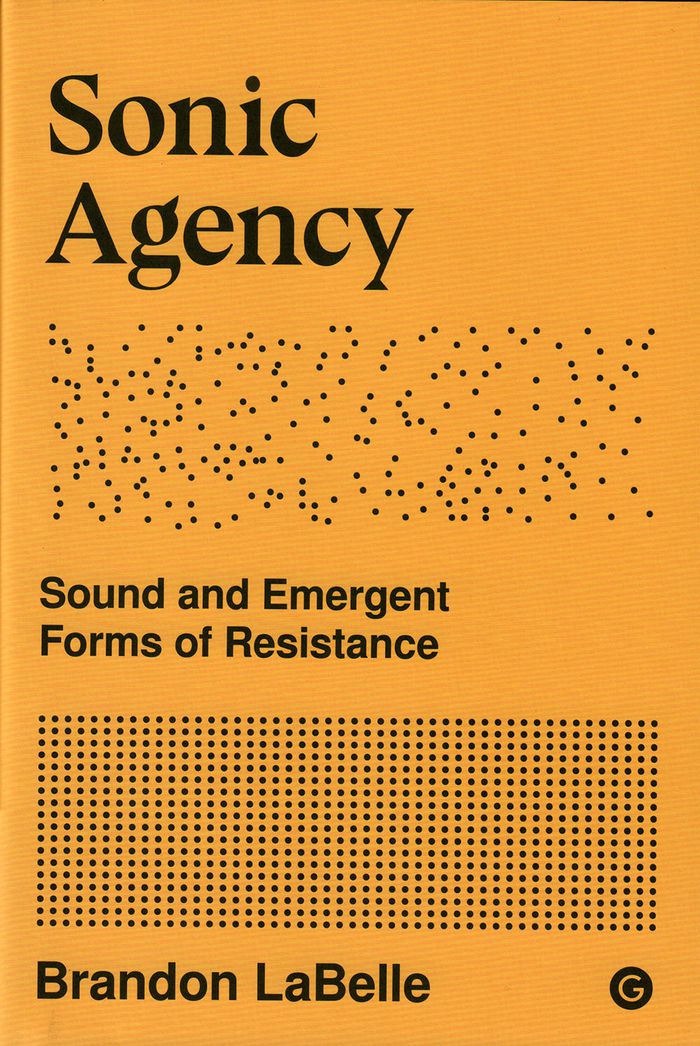books
$49.95
(available to order)
Summary:
Compositeur, architecte, mais aussi ingénieur civil et mathématicien, Iannis Xenakis (1922-2001), s'est sans répit investi dans la création, produisant une œuvre protéiforme marquée d'un engagement personnel indémenti. Né en Roumanie, il achève ses études en Grèce tout en s'engageant dans la Résistance durant la Seconde Guerre mondiale. Il est gravement blessé puis(...)
Iannis Xenakis : musique de l'architecture
Actions:
Price:
$49.95
(available to order)
Summary:
Compositeur, architecte, mais aussi ingénieur civil et mathématicien, Iannis Xenakis (1922-2001), s'est sans répit investi dans la création, produisant une œuvre protéiforme marquée d'un engagement personnel indémenti. Né en Roumanie, il achève ses études en Grèce tout en s'engageant dans la Résistance durant la Seconde Guerre mondiale. Il est gravement blessé puis condamné à mort dans son pays ; il est réfugié politique en France à partir de 1947, et débute sa carrière d'architecte chez Le Corbusier. Cet ouvrage rassemble pour la première fois l'ensemble des écrits de Iannis Xenakis consacrés à l'architecture et aux relations entre musique et architecture - à commencer par le texte fondateur «Musique, Architecture» (1971). Le dépouillement des archives personnelles de Xenakis a notamment révélé la richesse du matériel traitant d'architecture - articles, correspondances, conférences, écrits théoriques, réflexions programmatiques - complétant les esquisses et les projets architecturaux eux-mêmes. Complété d'un index critique illustré de l'ensemble des projets et réalisations (Sven Sterken), d'une large bibliographie (Makis Solomos) et d'un tableau chronologique biographique, le présent volume reprend le matériel originel de Xenakis (présenté et commenté par Sharon Kanach), structuré en quatre parties : «Les années Le Corbusier», «La ville cosmique et autres écrits», «Xenakis, architecte indépendant», «Les Polytopes».
books
October 2006, Marseilles
Acoustics
$115.00
(available to order)
Summary:
On the occasion of the 15-year anniversary of Idee und Klang Audio Design (Idea and Sound Audio Design), a publication has been created that is dedicated to sound scenography and at the same time reflects the work of the atelier. It includes questions about the still-young field of acoustic exhibition design as well as personal experiences in the area of audio creation.(...)
Sound scenography: the art of designing sound for spaces
Actions:
Price:
$115.00
(available to order)
Summary:
On the occasion of the 15-year anniversary of Idee und Klang Audio Design (Idea and Sound Audio Design), a publication has been created that is dedicated to sound scenography and at the same time reflects the work of the atelier. It includes questions about the still-young field of acoustic exhibition design as well as personal experiences in the area of audio creation. The topic is framed by interviews and texts by guest authors within this discipline.
Acoustics
On listening
$29.00
(available to order)
Summary:
"On listening" is a unique collection of forty multi-disciplinary perspectives drawn from anthropology, bioacoustics, geography, literature, community activism, sociology, religion, philosophy, art history, conflict mediation and the sonic arts including music, ethnomusicology and field recording. These specially commissioned contributions explore the many ways in which(...)
On listening
Actions:
Price:
$29.00
(available to order)
Summary:
"On listening" is a unique collection of forty multi-disciplinary perspectives drawn from anthropology, bioacoustics, geography, literature, community activism, sociology, religion, philosophy, art history, conflict mediation and the sonic arts including music, ethnomusicology and field recording. These specially commissioned contributions explore the many ways in which skilled listening can mediate new relationships with our physical environment and the people and other species that we share it with.
Acoustics
$37.95
(available to order)
Summary:
Profoundly intimate yet immediately giving onto distant spaces, both an ‘organ of fear’ and an echo chamber of anticipated pleasures, an uncontrollable flow subject to unconscious selection and augmentation, the subtlety, complexity, and variety of modes of hearing has meant that sound has rarely received the same philosophical attention as the visual. In "The order of(...)
The order of sounds: a sonorous archipelago
Actions:
Price:
$37.95
(available to order)
Summary:
Profoundly intimate yet immediately giving onto distant spaces, both an ‘organ of fear’ and an echo chamber of anticipated pleasures, an uncontrollable flow subject to unconscious selection and augmentation, the subtlety, complexity, and variety of modes of hearing has meant that sound has rarely received the same philosophical attention as the visual. In "The order of sounds", François J. Bonnet makes a compelling case for the irreducible heterogeneity of ‘sound’, navigating between the physical models constructed by psychophysics and refined through recording technologies, and the synthetic production of what is heard. From primitive vigilance and sonic mythologies to digital sampling and sound installations, he examines the ways in which we make sound speak to us, in an analysis of listening as a plurivocal phenomenon drawing on Foucault, Deleuze and Guattari, Barthes, Nancy, Adorno, and de Certeau, and experimental pioneers such as Tesla, Bell, and Raudive. Stringent critiques of the ‘soundscape’ and ‘reduced listening’ demonstrate that univocal ontologies of sound are always partial and politicized; for listening is always a selective fetishism, a hallucination of sound filtered by desire and convention, territorialized by discourse and its authorities. Bonnet proposes neither a disciplined listening that targets sound ‘itself’, nor an ‘ocean of sound’ in which we might lose ourselves, but instead maps out a sonorous archipelago—a heterogeneous set of shifting sonic territories shaped and aggregated by the vicissitudes of desire and discourse.
Acoustics
$30.00
(available to order)
Summary:
Au confluent des arts visuels et de la musique, les partitions graphiques de "voir dans le vent qui hurle les étoies rire, et rire" se présentent comme de véritables oeuvres autonomes conviant le regardeur à s'immerger dans l'univers du compositeurs montréalais Symon Henry. Le créateur nous livre un grand fleuve intranquille où se conjuguent les traits de plomb, de fusain(...)
Voir dans le vent qui hurle les étoiles rire, et rire
Actions:
Price:
$30.00
(available to order)
Summary:
Au confluent des arts visuels et de la musique, les partitions graphiques de "voir dans le vent qui hurle les étoies rire, et rire" se présentent comme de véritables oeuvres autonomes conviant le regardeur à s'immerger dans l'univers du compositeurs montréalais Symon Henry. Le créateur nous livre un grand fleuve intranquille où se conjuguent les traits de plomb, de fusain et de pastel gras. À travers ces 168 dessins, il nous invite à voir et à entendre sa musique, en écho au concert d'ouverture du pavillon Pierre Lassonde qui s'est tenu le 18 septembre 2016, faisant résonner encore un peu les notes de cet événement aussi unique que nécessaire.
$18.95
(available in store)
Summary:
Près de vingt ans après leur « concert » mythique dans les ruines de Pompéi (1971), les membres du groupe de rock progressif Pink Floyd, pour la plupart formés en écoles d'architecture à Londres, décident, lors de leur tournée mondiale « A Momentary Lapse of Reason » en 1989, d'offrir à Venise et en world live un concert flottant devant la place Saint-Marc. Contraint par(...)
Le concert : Pink Floyd à Venise
Actions:
Price:
$18.95
(available in store)
Summary:
Près de vingt ans après leur « concert » mythique dans les ruines de Pompéi (1971), les membres du groupe de rock progressif Pink Floyd, pour la plupart formés en écoles d'architecture à Londres, décident, lors de leur tournée mondiale « A Momentary Lapse of Reason » en 1989, d'offrir à Venise et en world live un concert flottant devant la place Saint-Marc. Contraint par des impératifs antagonistes de nappes sonores architecturées, de réverbérations acoustiques ingérables et de préservation du patrimoine classé, cet impossible concert s'inscrit à la fois dans l'histoire des grands concerts rock et dans celle des édifices flottants de la Sérénissime. Mais au lieu de fêter le Rédempteur, l'évènement virera finalement à la polémique et au fiasco.
Acoustics
Spectre n° 02 : résonances
$29.95
(available to order)
Summary:
Le deuxième numéro de la publication annuelle consacrée à l'expérimentation sonore et musicale, coéditée par Shelter Press et l'Ina GRM – Groupe de Recherches Musicales, autour du concept de résonances, avec des contributions de Maryanne Amacher, Chris Corsano, Ellen Fullman, Christina Kubisch, Okkyung Lee, Pali Meursault, Jean-Luc Nancy, David Rosenboom, Tomoko Sauvage,(...)
Spectre n° 02 : résonances
Actions:
Price:
$29.95
(available to order)
Summary:
Le deuxième numéro de la publication annuelle consacrée à l'expérimentation sonore et musicale, coéditée par Shelter Press et l'Ina GRM – Groupe de Recherches Musicales, autour du concept de résonances, avec des contributions de Maryanne Amacher, Chris Corsano, Ellen Fullman, Christina Kubisch, Okkyung Lee, Pali Meursault, Jean-Luc Nancy, David Rosenboom, Tomoko Sauvage, The Caretaker, David Toop et Christian Zanési.
Acoustics
$54.00
(available to order)
Summary:
The relationship between sound and space has become central to both creative practices in music and sound art and contemporary scholarship on sound. Entire subfields have emerged in connection to the spatial aspects of sound, from spatial audio and sound installation to acoustic ecology and soundscape studies. But how did our understanding of sound become spatial? In(...)
Stereophonica: Sound and space in science, technology and the arts
Actions:
Price:
$54.00
(available to order)
Summary:
The relationship between sound and space has become central to both creative practices in music and sound art and contemporary scholarship on sound. Entire subfields have emerged in connection to the spatial aspects of sound, from spatial audio and sound installation to acoustic ecology and soundscape studies. But how did our understanding of sound become spatial? In ''Stereophonica,'' Gascia Ouzounian examines a series of historical episodes that transformed ideas of sound and space, from the advent of stereo technologies in the nineteenth century to visual representations of sonic environments today. Developing a uniquely interdisciplinary perspective, Ouzounian draws on both the history of science and technology and the history of music and sound art. She investigates the binaural apparatus that allowed nineteenth-century listeners to observe sound in three dimensions; examines the development of military technologies for sound location during World War I; revisits experiments in stereo sound at Bell Telephone Laboratories in the 1930s; and considers the creation of "optimized acoustical environments" for theaters and factories. She explores the development of multichannel "spatial music" in the 1950s and sound installation art in the 1960s; analyzes the mapping of soundscapes; and investigates contemporary approaches to sonic urbanism, sonic practices that reimagine urban environments through sound.
Acoustics
Structure and synthesis
$54.00
(available to order)
Summary:
In this extensive anthology, Mark Fell, a pioneering artist known for his sound installations and his musical work solo and as part of SND and Sensate Focus, assembles a collection of diverse materials charting his defiantly unorthodox thinking on time, structure, technology, and the relation between academic and popular electronic music.
Structure and synthesis
Actions:
Price:
$54.00
(available to order)
Summary:
In this extensive anthology, Mark Fell, a pioneering artist known for his sound installations and his musical work solo and as part of SND and Sensate Focus, assembles a collection of diverse materials charting his defiantly unorthodox thinking on time, structure, technology, and the relation between academic and popular electronic music.
Acoustics
$42.00
(available to order)
Summary:
This book highlights sound's invisible, disruptive, and affective qualities and asks whether the unseen nature of sound can support a political transformation. In ''Sonic agency'', Brandon LaBelle sets out to engage contemporary social and political crises by way of sonic thought and imagination. He divides sound's functions into four figures of resistance -- the(...)
Sonic agency: sound and emergent forms of resistance
Actions:
Price:
$42.00
(available to order)
Summary:
This book highlights sound's invisible, disruptive, and affective qualities and asks whether the unseen nature of sound can support a political transformation. In ''Sonic agency'', Brandon LaBelle sets out to engage contemporary social and political crises by way of sonic thought and imagination. He divides sound's functions into four figures of resistance -- the invisible, the overheard, the itinerant, and the weak -- and argues for their role in creating alternative "unlikely publics" in which to foster mutuality and dissent. He considers issues of disappearance and hidden culture, nonviolence and noise, creole poetics, and networked life, aiming to unsettle traditional notions of the "space of appearance" as the condition for political action and survival.
Acoustics








